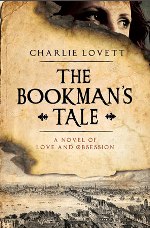The Bookman’s Tale
Lovett’s enjoyable homage to books and bookishness opens, fittingly, in that literary magnet known as Hay-on-Wye in Wales. In 1995, Peter Byerly, an American book dealer, is living in Oxfordshire after the death of his beloved wife, Amanda. She had served as the link between her shy husband and the social world he dreaded, and now, depressed and lonely, he buries himself in his career. When he finds a Victorian watercolor bearing Amanda’s likeness tucked into an old bookshop volume about Shakespearean forgeries, Peter gets pulled into solving two interrelated mysteries: learning more about the mysterious woman, and finding indisputable proof of the identity of England’s greatest playwright.
The narrative jumps between Peter’s investigation and his touching romance with Amanda in the 1980s, which unfolds in a North Carolina university library. In intervening segments, the plot also dramatizes the lives of the successive owners of a long-lost text, Robert Greene’s Pandosto, which inspired one of Shakespeare’s last plays. The boisterousness of London’s Southwark is shown to good effect in the story of Bartholomew Harbottle, a bookseller who counts many Elizabethan dramatists as his drinking buddies. Not all of the subsequent historical scenes are as interesting; although it’s critical to the puzzle, the final tale of Victorian rivalries feels slightly superficial in comparison. However, anyone who loves literature should like seeing how a book’s provenance comes to life.
who counts many Elizabethan dramatists as his drinking buddies. Not all of the subsequent historical scenes are as interesting; although it’s critical to the puzzle, the final tale of Victorian rivalries feels slightly superficial in comparison. However, anyone who loves literature should like seeing how a book’s provenance comes to life.
Tomb-robbing, blackmail, family secrets, and murder all play a part in this complex work, and with the help of some fortunate coincidences, the pieces all lock together. Lovett, a former antiquarian book dealer, obviously knows his stuff, and his readers will get a fun education in the rare book trade. With its comfortable style, The Bookman’s Tale is more charming than suspenseful, but just as one would hope for with a novel about books, it’s a pleasure to read.






